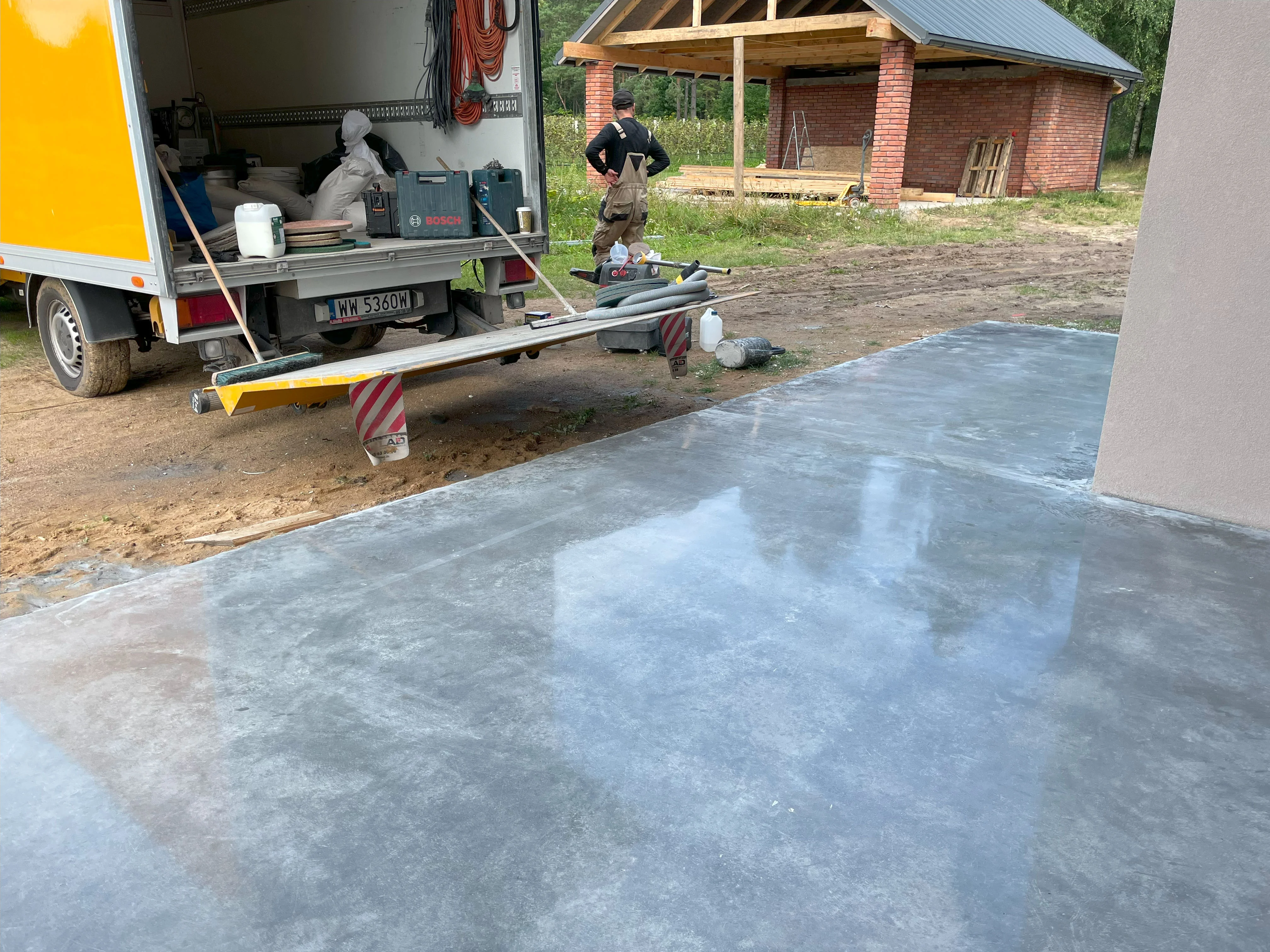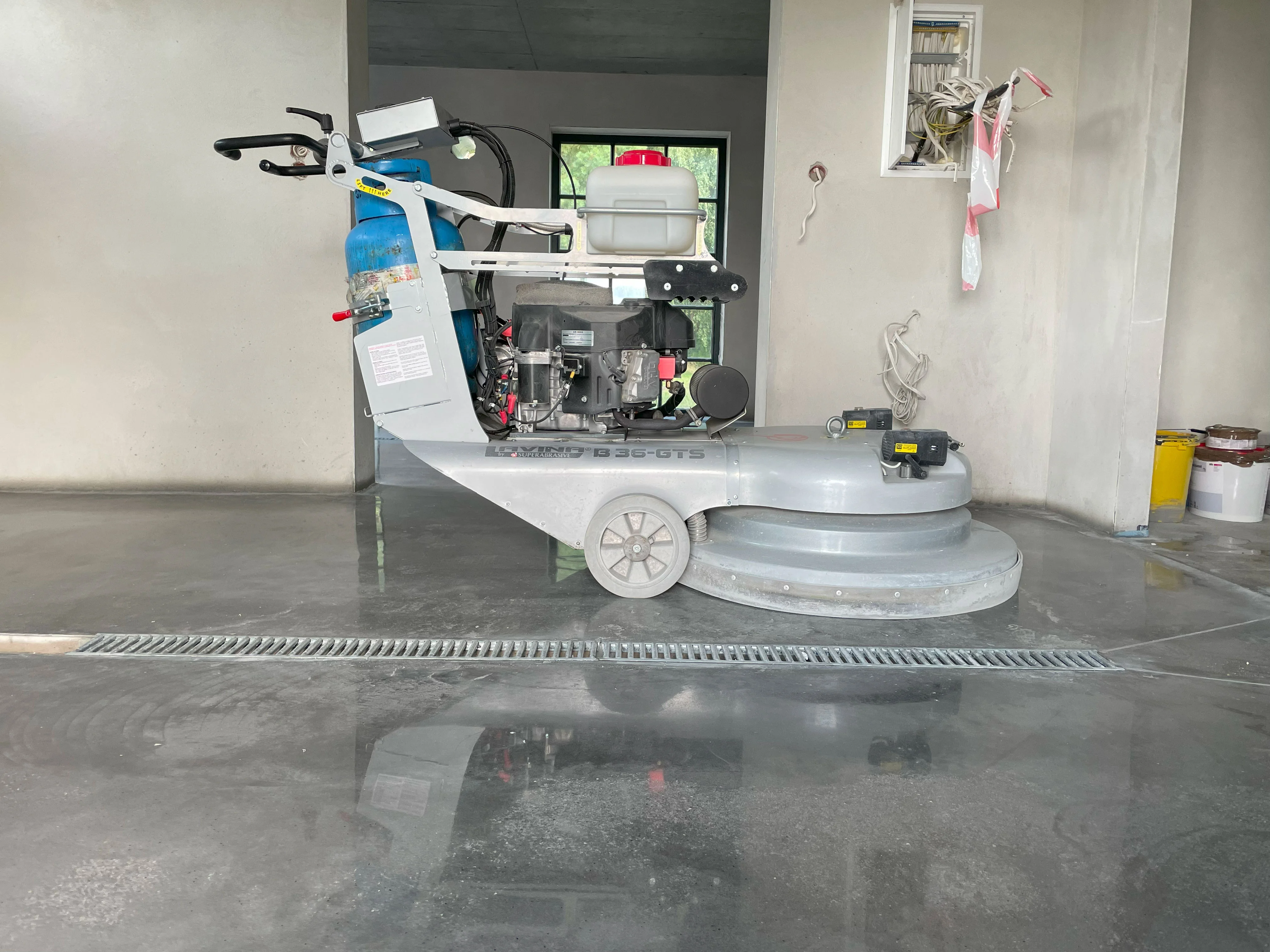Polished concrete floor has its roots in ancient Egyptian civilization
The Egyptians were among the first people to use concrete to build their structures. They probably understood the importance of a plastic that is durable and at the same time easy to mold.
Initially, concrete was used mainly as a basis for other building materials. This method of using concrete is still popular today, but over time, people began to appreciate the natural beauty of raw concrete.
Polished concrete was probably first introduced in the first half of the 20th century, when technology allowed the development of new techniques for polishing concrete floors. Instead of covering concrete with another material, they began to polish it to emphasize its natural beauty.

The concept of polishing concrete floors really gained popularity in the 50s. and 60. 20th century. During this period, modernist architecture became popular. This design concept emphasized functionality and minimalism, and polished concrete fit perfectly into this philosophy, emphasizing the natural beauty of the raw material.
Over the years, the technology polishing concrete floors has developed significantly. Many manufacturers now offer all kinds of products for polishing concrete, allowing you to achieve a variety of finishing effects, from ultra-smooth to a texture reminiscent of natural stone.
Polished concrete is now widely used in many types of buildings. Its durability, versatility and low cost of maintenance make it a popular choice for many architects and interior designers. Of course, polished concrete now has its place in history as one of the most important building materials of the 20th century.

Why choose polished concrete floor compared to other types of industrial flooring?
Polished concrete floor offers a number of advantages over other types of industrial floors:
1. Durability and strength: Polished concrete is extremely durable and resistant to heavy loads, which is a decisive factor for many industrial applications. It is resistant to scratches, stains and erosion caused by chemicals.
2. Łatwość konserwacji: Polished concrete floors are easy to keep clean. They can be easily cleaned with a mop or a scrubbing machine.
3. Durability and strength: Polished concrete has a sophisticated, modern look that can emphasize the architecture of the building. The possibility of precise finishing and color options make them very aesthetically attractive.
4. Cost: Compared to other types of flooring, polished concrete flooring is relatively inexpensive both in terms of installation and maintenance. It does not require frequent replacement or repair, which translates into savings in the long run.
5. Slip resistance: Polished concrete floors are less slippery than other types of flooring, reducing the risk of falls and injuries.
6. Allergy resistance: Polished concrete flooring does not contain contaminants such as dust and mold that can cause allergic reactions, which is crucial for places like hospitals or office spaces.
7. Environment: Polished concrete is also an environmentally friendly choice because it does not emit harmful substances into the atmosphere, and its production has less impact on the environment than the production of some other flooring materials.
All these advantages make polished concrete floors a popular choice for industry, warehouses, shops, as well as residential and office buildings.





